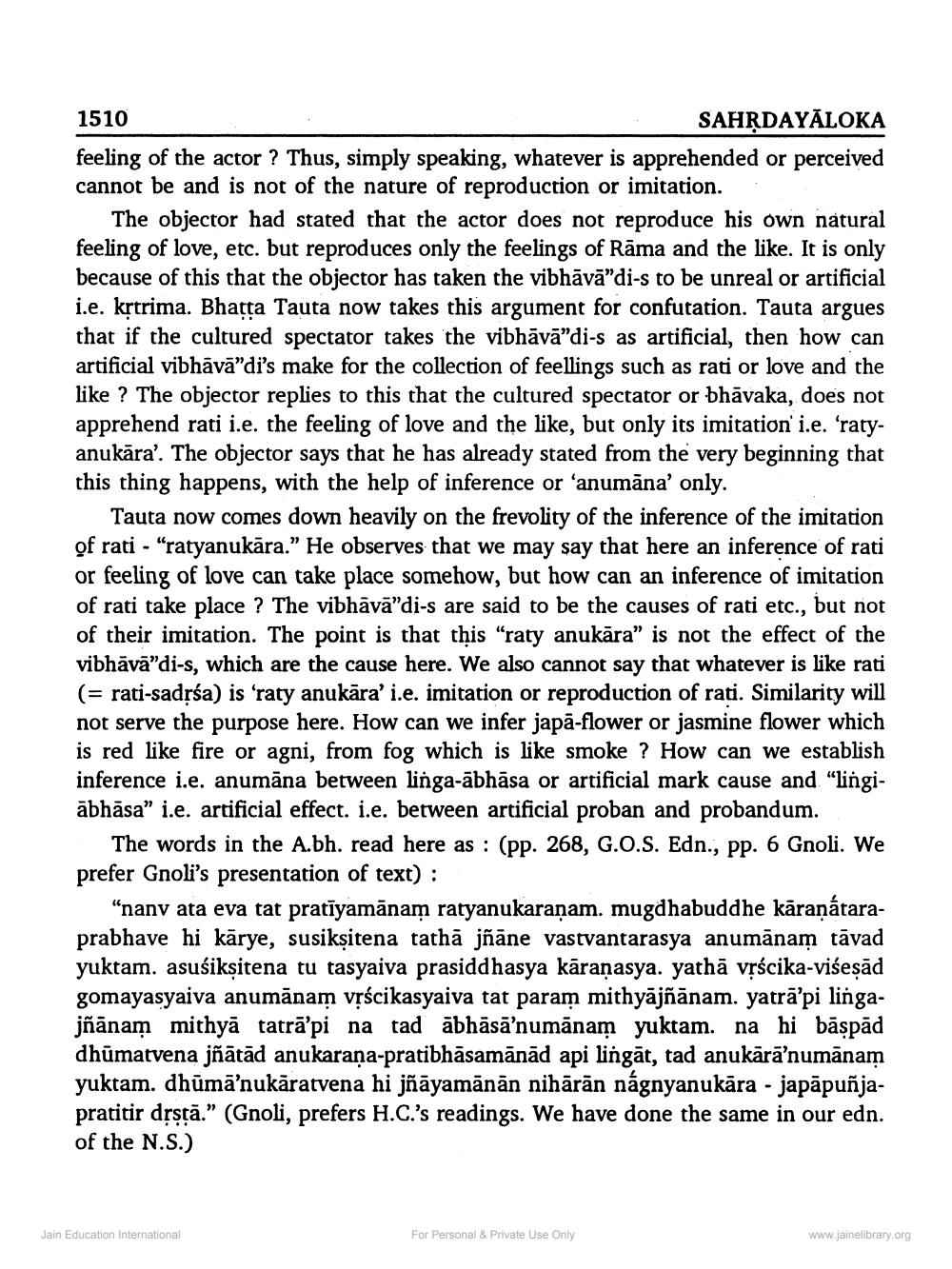________________
1510
SAHṚDAYĀLOKA
feeling of the actor? Thus, simply speaking, whatever is apprehended or perceived cannot be and is not of the nature of reproduction or imitation.
The objector had stated that the actor does not reproduce his own natural feeling of love, etc. but reproduces only the feelings of Rama and the like. It is only because of this that the objector has taken the vibhāvā"di-s to be unreal or artificial i.e. kṛtrima. Bhatta Tauta now takes this argument for confutation. Tauta argues that if the cultured spectator takes the vibhāvā"di-s as artificial, then how can artificial vibhāvā"di's make for the collection of feellings such as rati or love and the like? The objector replies to this that the cultured spectator or bhāvaka, does not apprehend rati i.e. the feeling of love and the like, but only its imitation' i.e. 'ratyanukāra'. The objector says that he has already stated from the very beginning that this thing happens, with the help of inference or 'anumana' only.
Tauta now comes down heavily on the frevolity of the inference of the imitation of rati - "ratyanukāra." He observes that we may say that here an inference of rati or feeling of love can take place somehow, but how can an inference of imitation of rati take place? The vibhāvā"di-s are said to be the causes of rati etc., but not of their imitation. The point is that this "raty anukara" is not the effect of the vibhāvā"di-s, which are the cause here. We also cannot say that whatever is like rati (= rati-sadṛśa) is 'raty anukara' i.e. imitation or reproduction of rati. Similarity will not serve the purpose here. How can we infer japā-flower or jasmine flower which is red like fire or agni, from fog which is like smoke? How can we establish inference i.e. anumāna between linga-ābhāsa or artificial mark cause and "lingiābhāsa" i.e. artificial effect. i.e. between artificial proban and probandum.
The words in the A.bh. read here as (pp. 268, G.O.S. Edn., pp. 6 Gnoli. We prefer Gnoli's presentation of text):
"nanv ata eva tat pratīyamānam ratyanukaraṇam. mugdhabuddhe kāraṇátaraprabhave hi kārye, susikṣitena tathā jñāne vastvantarasya anumānam tāvad yuktam. asuśiksitena tu tasyaiva prasiddhasya kāraṇasya. yathā vṛścika-viśeṣād gomayasyaiva anumānam vṛścikasyaiva tat param mithyājñānam. yatrā'pi lingajñānam mithyā tatrā'pi na tad ābhāsā'numānam yuktam. na hi bāṣpād dhūmatvena jñātād anukaraṇa-pratibhāsamānād api lingāt, tad anukārā'numānam yuktam. dhūmā'nukāratvena hi jñāyamānān nihārān nágnyanukāra - japāpuñjapratitir dṛṣṭā." (Gnoli, prefers H.C.'s readings. We have done the same in our edn. of the N.S.)
Jain Education International
For Personal & Private Use Only
www.jainelibrary.org




